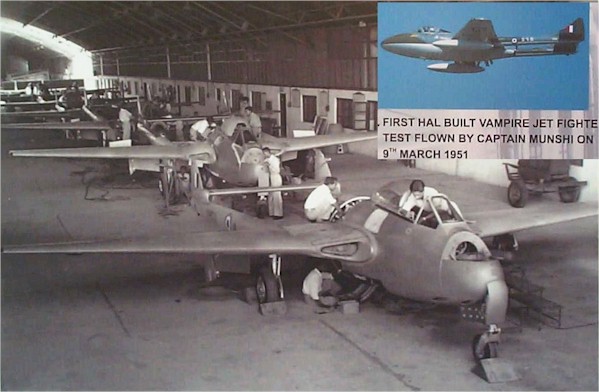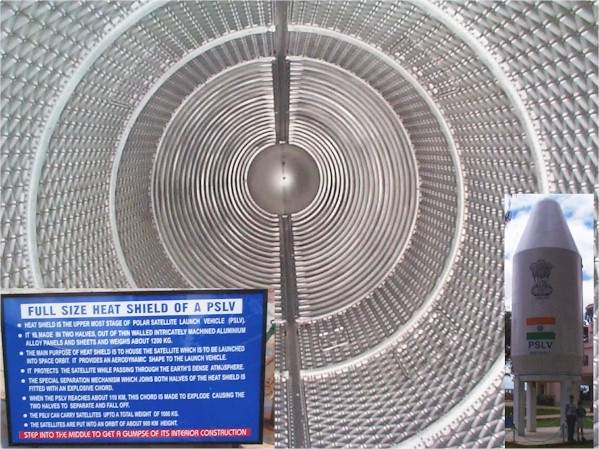In a country of one billion with an aviation history stretching way back into the second decade of the last century, the absence of aviation museums in good numbers is a huge surprise. Till recently the only two public museums on aviation were the Indian Air Force Museum at Palam and the Naval Aviation Museum at Dabolim, Goa. No other museum devoted exclusively to aviation or aerospace existed. There were a few museums around the country operated by the odd air force establishment but these were of restricted entry. The common public nor the international tourist could ever hope to visit these “private” museums without some kind of pull in the political or military circles. Even then, taking photographs was a “no-no”.
Thus the opening of the Hindustan Aeronautics Limited’s Heritage Center and Aerospace Museum in the garden city of Bangalore is a whiff of fresh air to the aviation enthusiast in India. The Museum was opened on August 31st, 2001 by the then Chairman of HAL, Dr. K D Nair. The museum with its collection of ten aircraft and two mockups can claim to be the second largest public aviation museum in the country, next only to the IAF Museum in palam with its 40+ aircraft. The Museum is located on the Airport road at Bangalore. Just besides the HAL’s helicopter complex and hardly 2 km from the Bangalore airport.
 |
Visitors at the Museum’s lobby watching the glowboards explaining HAL’s various exepertises. A Video of the LCA Test flight was playing in the Television during our visit. |
The Museum houses a collection of aircraft, plus a gallery of rare photographs that chronicles the history of aircraft manufacturing and aviation industry in India since its inception. There is an entry fee of Rs Twenty for every visitor (Approx 40 US Cents) , plus Rs Twenty five to be charged for taking a camera for photography. A Video Camera attracts Rs Forty five as the fees. There is a staff of ten to look after the Museum’s operations, including a security detail to keep the visitor off from touching the exhibits. The Museum houses a small souvenir shop that sells mementos , postcards and posters for reasonable rates.
The visitor has several galleries to choose from. Most of the aircraft are displayed outside the main building. The two exceptions are the HUL-26 Pushpak and the HAL Basant which are inside the Hall 2. Hall 1 is a circular building with seven galleries chronicling HAL through the years. Photographs of key visitors visiting the HAL premises over the years (including Lord Mountbatten, King Zahir Shah of Afghanistan, the late King birendra of Nepal) to important milestones like the first flight of the HT-2, the HF-24 Marut etc are on display here. Many of these pictures are rare and have never been seen before. Pictures of Vultee Vengeance bombers under construction in the 40s, Dakotas being overhauled, Tempests, Devons, under overhaul in the 50s, Vampires, Gnats, Maruts under construction in the 60s etc can be seen in the galleries. Each gallery has metal models of the aircraft from that decade on display. Several photo mosaics illustrating HAL’s expertise in Trainer aircraft, Combat aircraft, Transport Aircraft are also seen.
|
Hall 2 has a small hall where two aircraft, the HUL-26 Pushpak and the HA-31 Basant are on display. There are several models of aero engines on display including a radial engine from a Dakota. Several models of aircraft are also on display here. Hall 2 also hosts a couple of flight simulators running PC Flight sims to give the visitor a feel of what it is sitting in a cockpit. using overhead projectors, and Pentium PCs, the experience is novel enough for the Indian visitor, whereas visitors from abroad might view the crude attempt to recreate the experience of flight with mild amusement.
The most enjoyable experience in the hall 2 is the Air Traffic Control building. A charge of Rs 10 is levied from the visitor to go to level 3 where a dummy ATC has been built. The ATC gives a clear view of the Bangalore airport. With aircraft taking off every hour, the ATC is a good experience. Here again, the obssesiveness of Indian security agencies shows. Cameras are not allowed beyond Level two as taking photographs of the airport are considered “Detrimental to the security”. The Museum staff are always at hand to explain how the ATC works and were helpful in explaining the dummy equipment and its roll in the ATC
Ofcourse the star attraction would be the Aircraft collection which is spread out in the open area outside the HAL Museum main building. The aircraft are displayed in individual display zones and are properly fenced off with chains.
What the aircraft collection sorely lacks are examples of the De Havilland Vampire and the Folland Gnat. Both these aircraft were manufactured in good numbers with nearly 400 built of each type. Yet surprisingly no examples were found to be put up on display here. The HAL Corporate Office does boast one HAL Ajeet [E-1083] (Gnat Mk II) on display outside on a traffic island. But regretfully the Museum does not have an example of the aircraft in its collection.
The “Space” component of the Museum comes from the fact that it holds several scale models of the GSLV and PSLV Satellite launch vehicles. The Heatshield/Nose cone of the PSLV is on display too. HAL had been involved in fabricating several components for the Indian Space Research Organisation (ISRO) which is responsible for India’s Space Program.
The opening of the HAL museum is a step in the right direction. In a country where preservation of Aviation History is not on the priority list, this attempt to educate the common visitor by HAL is praiseworthy. In doing so, HAL has also underlined the point that Corporate involvement and sponsorship is very much necessary in such an effort.
| Aircraft Type | Serial No |
| BAe Canberra B(I) 58 | BF-597 |
| De Havilland Devon | HW-201 |
| HAL HF-24 Marut 1T | D-1695 |
| HAL HT-2 | IX-480 |
| HAL HJT-16 Kiran II | U-784 |
| MiG-21 U | U-2974 |
| HAL Cheetah | Z-1897 |
| HAL HA-31 Basant | NA |
| HAL HUL-26 Pushpak | NA |
| Westland Sea King Mk 42a | IN-504 |
| HAL LCA Mockup | NA |
| HAL ALH Mockup | ‘IN-701’ |
| NAL Hansa | VT-XIM |




